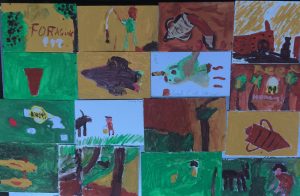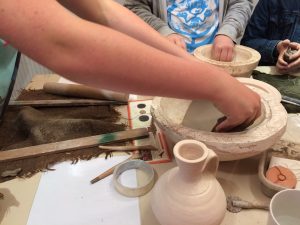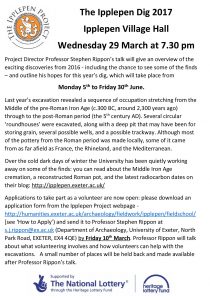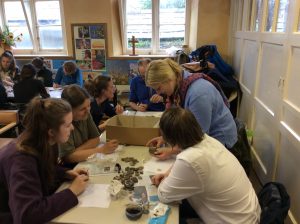
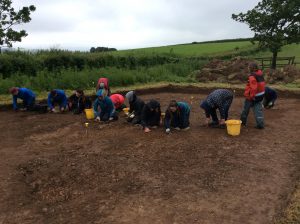
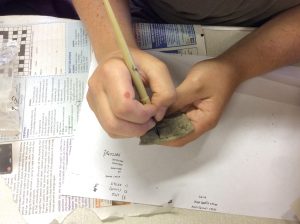
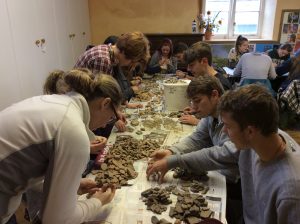
Due to a rainy start first thing, our students and volunteers headed to the Hub at Ipplepen Methodist Church where Stephen Rippon, Kristen Leith and Danielle Wootton talked to the students and volunteers about identifying different types of pottery and pottery marking. Working with the handling collection, students tried their hand at sorting pottery into finewares and coarsewares and identifying fragments of rims, body sherds and handles.
Then, using a fine nib and ink, students and volunteers carefully marked pottery from last year’s excavation, which had previously been washed, dried, bagged and labelled. The pottery is marked with the accession number allocated by Torquay Museum, along with the site code from last year and the archaeological context number. Marking individual pieces of pottery is a painstaking but necessary task, enabling the each pottery sherd to be linked to the site and archaeological context within which it was found.
Stephen Rippon took groups around the Hub exhibition, showing the team the finds from this year’s excavation which are now on display there.
The skies brightened after lunch so the team headed back to site to continue cleaning back our three trenches which were opened up on Monday. Before excavating any archaeological features, the team will make a scale drawing of each trench in plan. We have started to plan trench 13, and hope to plan trench 14 and 15 by the end of the week.

